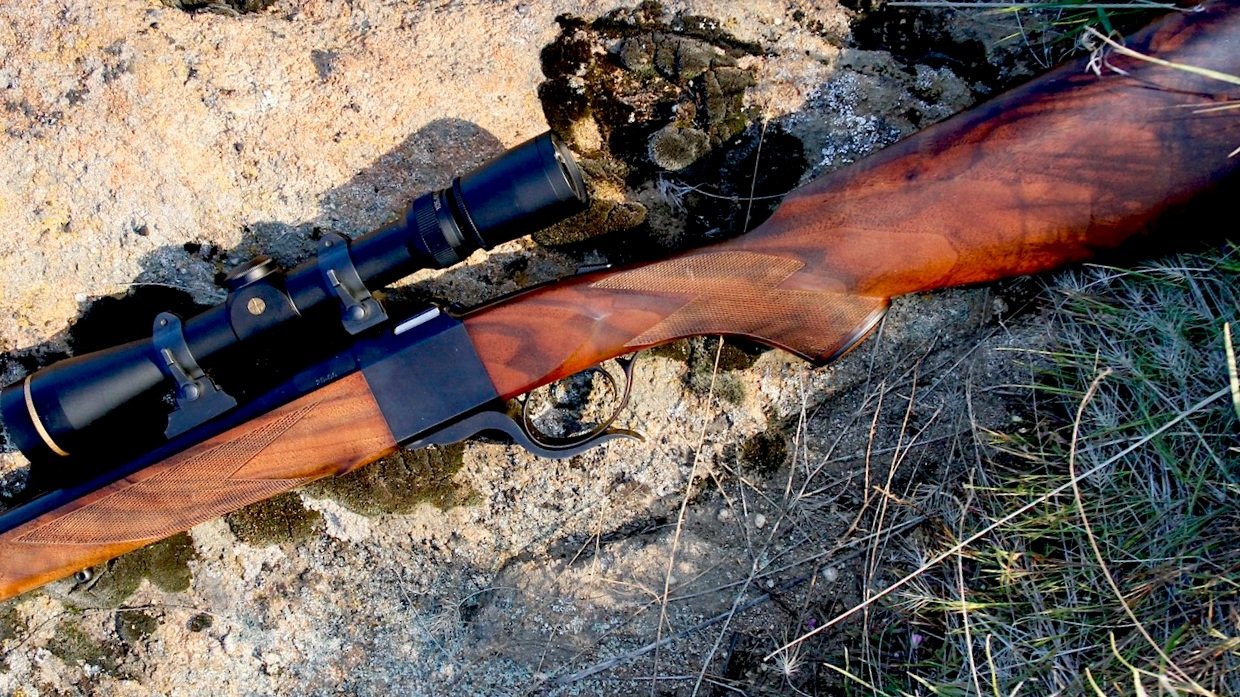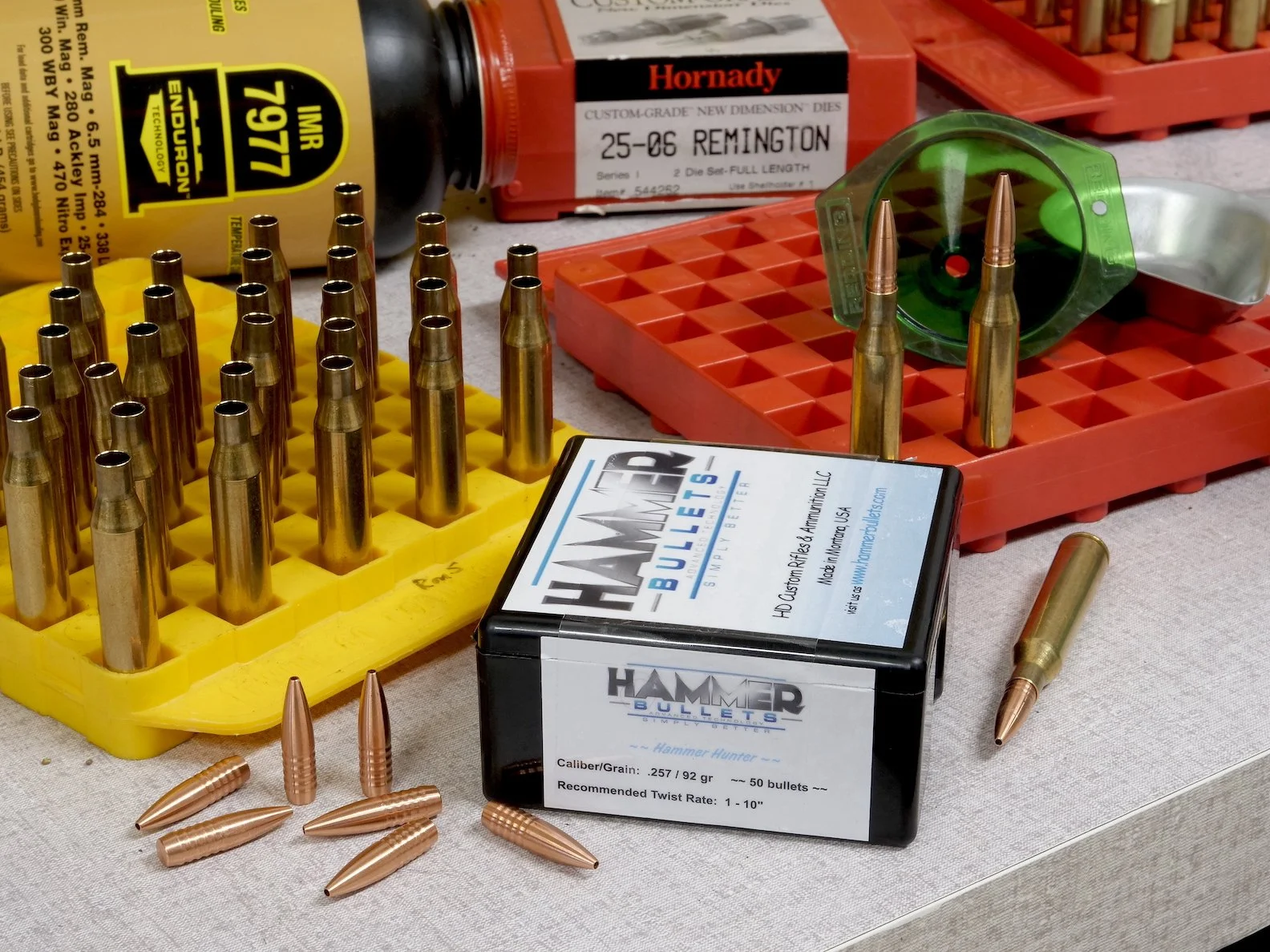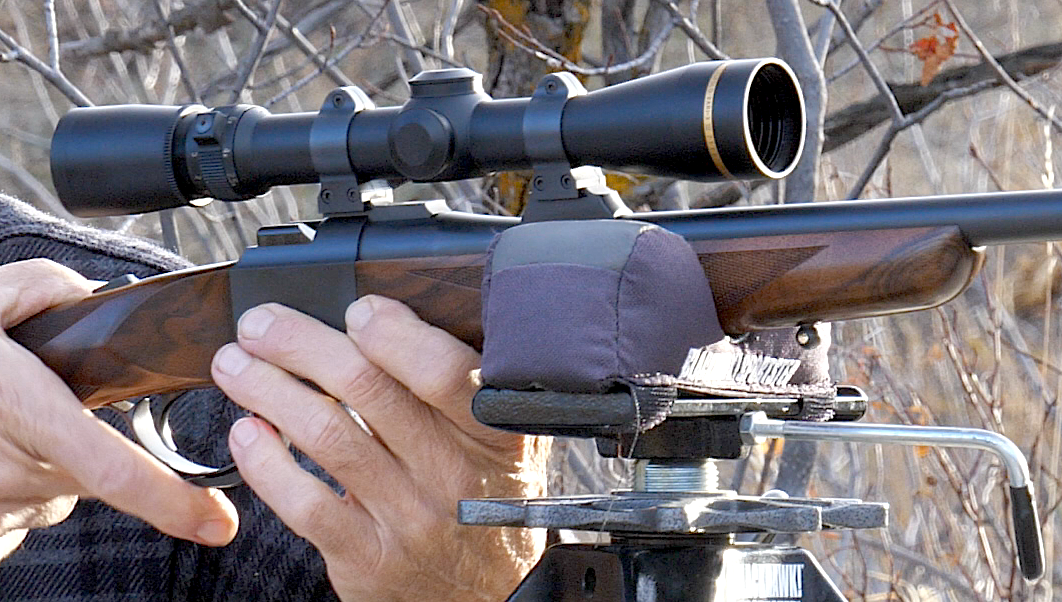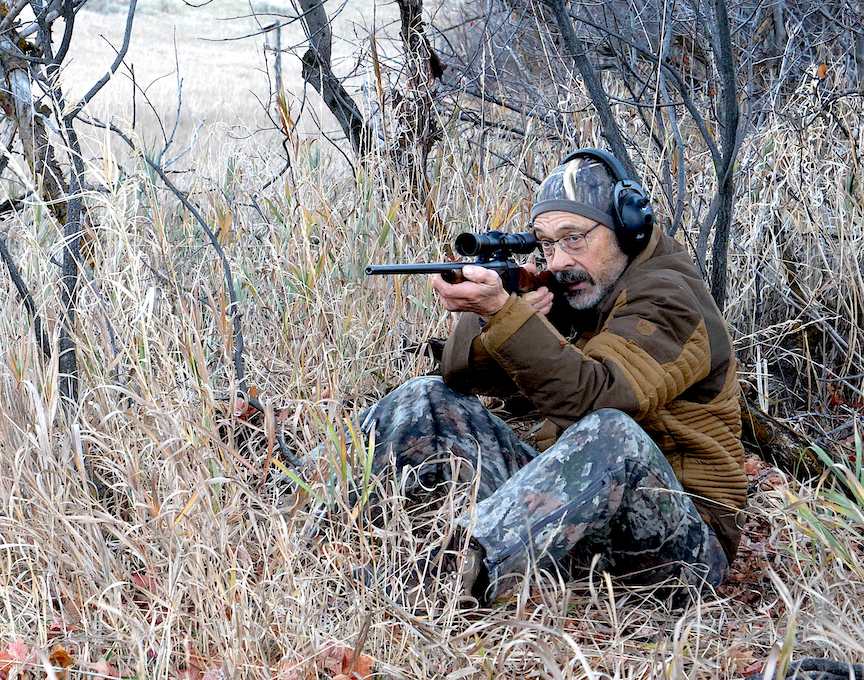Diagnosing Your Rifle’s Impacts
by Ron Spomer
Do you know where your rifle shoots and why? If not, it might be time to diagnose your rifle’s impacts.
Ballistic trajectory tables are remarkably accurate predictors of downrange bullet flight, but they don’t always tell the whole story. My recent work with a Dakota Model 10 falling block single shot chambered 25-06 Remington revealed that truth. Its bullet trajectory out to 300 yards was a mystery begging for an explanation. The way in which I solved it might work for you, too.
After building MOA accurate hand loads that pushed 92-grain Hammer bullets 3,550 fps over my chronograph, I zeroed the Dakota 2.2 inches high at 100 yards. A ballistic calculator indicated those bullets would then reach maximum ordinate of 3 inches high at about 175 yards, still be 2.8 inches high at 200 yards, but drop 0.04 inches, or just less than a half inch, at 300 yards.
Dakota Model 10, 25-06 Remington, 92-grain Hammer, 3,550 fps
That, my friends, is flat. But it was about to get flatter.
To test further, I shot at 200 yard, bullets landing 2” to 2.8” high, nicely within their MOA potential as predicted by the JBMballistis.com calculator and shooterscalculator.com. So I tried two shots at 300 yards — and found magic. Two bullet holes were about 3 and 4 inches high. Weird.
A week passed before I had a chance to try again. Another 300-yard shot from a cold barrel at the same target also landed 3” high. The three bullet holes fell well inside MOA, too. So accuracy/precision wasn’t the issue. Defying gravity was.
The two close shots 2-inches above the bull were from 200 yards. The other four were from 300 yards, wind deflection accounting for the right three.
Before diving deeper, we should all understand and agree on basic, time-tested physics. Bullets are “pulled” toward the center of planet Earth by something we call gravity. Its attracting strength in velocity is 32 feet per second per second, meaning “falling” or “pulled” objects accelerate with time.
The confusing part for many shooters is the reality that gravity begins pulling bullets downward the instant they escape from a barrel. This doesn’t jive with the common illustration depicting bullet flight as climbing or rising above the barrel/scope before arcing down far downrange. Even my 25-06 load set to hit 2.2” high at 100 yards was predicted to “climb” to 3” above line-of-sight at 175 yards. So if gravity is pulling, how is that possible?
Those common illustrations of bullet trajectory don’t always clearly show why bullets rise above line-of-sight: it’s because the barrel is tilted upward in relation to the line-of-sight. Duh. Once we acknowledge this is seems quite obvious. Like throwing a baseball from centerfield to home plate, one must throw it far above the desired landing place in order to reach it. Bullets, fortunately, needn’t be aimed that high, but they do need to be “thrown” at some angle up and through the line-of-sight if we have any hope of hitting any target down range. Even an extremely high B.C. bullet fired 3,200 fps dead level at a 100-yard target will strike it 1.8” low.
This reality is why hunters nearly always zero dead-on or slightly high at 100 yards. The really savvy ones zero 2 to 3 inches high, knowing that the bullets they’re angling upward that much will “climb” no more than 2 to 3 inches high at mid-range and travel farther before falling too far below their targets to hit the vital zone.
That was my goal with the 92-grain Hammers in my 25-06 Remington loads. Aim for the vertical center of a deer’s chest at 100 yards and the bullet strikes 2 inches high, well within the lungs. Guess the range wrong and if the deer was really at 170 or 210 yards, the bullet would still hit the high lungs. And with a 0.04” drop at 300 yards, it would still be in the boiler room. With 3 inches of drop at 340 yards, the projectile would likely hit the heart. This flat trajectory curve makes my 25-06 Dakota a “dead on” killer from the muzzle to 340 yards, its maximum point blank range for a 6-inch diameter target. I know of no faster method for the vast majority of field shooting scenarios.
This is the value of zeroing for maximum point blank range. But my 25-06 loads were exceeding that. Why? They seemed to be defying physics. Figuring this out proved quite the challenge. In a video I produced on the whole conundrum, viewers wrote in with their possible solutions. I considered and tested them. Here are most:
1. My scope was malfunctioning or broken. Reasonable guess, but the scope reticle moved accurately and held MOA or slightly better at 100 yards and even 300 yards. A weak or broken spring under the erector tube would lead to erratic results, not consistently high hits at 300 yards.
2. Loose scope mounts: See above. This would produce scattered shots in all directions, not just high at 300 yards.
While a loose scope can be the case of erratic trajectory, it isn’t likely to produce consistently high hits far down range. My old Leupold VX3 2.5-8X36mm and Talley QR rings checked out solid.
3. Deformed or unbalanced bullets: If this were the case, groups wouldn’t have printed MOA or better at 100 and 300 yards. In addition, unbalanced bullets would create additional drag leading to lower strikes at 300 yards, not higher.
4. Inconsistent handloads: Possible, but I trickle powder to within 1/10th of a grain for each load. And if the loads were inconsistent, they shouldn’t have produced MOA groups.
5. I calculated with the wrong bullet B.C.: This seemed a possibility, but when I ran a trajectory chart with double the rated B.C. number, the 300-yard impact was predicted at +0.03”, nowhere close to 3” high.
6. Wrong Muzzle Velocity reading from chronograph: Possible because 3,550 fps was slightly faster than my handloading recipe predicted. But I calculated my trajectory tables with that number, so it’s unlikely a true MV 100 or even 200 fps faster or slower would have led to hits 3” high. I built trajectory charts based on those inflated MVs along with the doubled B.C. and the predicted impact was still a fraction of an inch low at 300 yards.
The Hammer Hunter bullets were sleek and consistent and I was careful to load within 1/10th grain for consistency, so those were unlikely to have caused the 300-yard high hits.
7. Angled shot. My 300-yard target was at a higher level than my bench, so the barrel was angled up. Shots always strike higher when shooting uphill and downhill. But the measured angle was just 5-degrees, nowhere steep enough to make a 3” difference at 300 yards. Even a 10-degree angle would have added just 0.25” additional height to a 300-yard shot.
8. Humidity and altitude: Both of these environmental factors reduce air density, thus drag, leading to higher hits. But doubling the humidity and adding 5,360 feet of elevation to ballistic calculations resulted in less than an inch of difference at 300 yards.
9. Dirty barrel: Possibly, but unlikely. In my experience dirty barrels ruin group size (accuracy,) not trajectory. A dirty barrel should have opened groups at all distances, not just thrown shots consistently high at 300 yards. But I thoroughly cleaned the bore anyway before my next test shots. The high trajectory remained.
10. The coriolis effect! This is a somewhat of a joke but a real phenomenon related to the spin of the planet, which is rotating west to east at 1,000 mph at the equator, about 700 mph at the 45th latitude, and 0 mph at the North Pole. The result of this when you launch a bullet toward a target to the east is that target will be spinning down and away from the bullet. By the time the bullet arrives, the target will dropped under its expected impact point. Shooting to the west results in the low hits because the target rises up with Earth’s spin. Obviously, this doesn’t amount to much inside of 800 or 1000 yards, so Coriolis is unlikely to explain my high shots. Besides, I was shooting to the west! (By the way, another explanation of Coriolis is centrifugal force. The spinning Earth throws the bullet outward (up) much like a merry-go-round throws you off its rim. I don’t know which version is correct, but if I don’t engage targets at 1,000 yards, I don’t have to worry about it.
11. My sling studs were dragging on the tripod bag. This one has potential. Ideally both fore-end and butt stock should slide freely on the bags. Video of my shots shows the front stud hitting variably. Could this have been enough to cause the high hits at range? I doubted it because groups were MOA at all distances, suggesting consistency. Review of the video suggested bullets were free of the barrel before recoil brought the stud in contact. But I tested this theory along with the next one during subsequent firing.
The fore-end sling stud can catch on the sand bag and throw off shots, but subsequent testing with this carefully avoided did not solve the problem.
12. Inconsistent fore-end pressure on the barrel. Aha! Here’s my vote for the most likely candidate. My rifle is a Dakota Model 10 falling block single shot with a two piece stock. Unlike the one-piece stocks I’m used to on bolt-actions, the Dakota’s stock can put differing pressure on the barrel depending on how hard it recoils off various surfaces. Rifles with one-piece stocks can do this too if the barrel and stock touch. Free floating is supposed to solve this. The Model 10’s fore-end is attached to the barrel. Essentially it hangs from the barrel, so pressure on it puts pressure on the barrel.
To test fore-end pressure inconsistencies I carefully positioned the rifle on the tripod bag as far back on the fore-end as possible. This put the steel of the action on the bag and perhaps two inches of the fore-end wood, enough to create consistent pressure on the barrel if not alleviate most of it. Alas, test shots with this consistent fore-end position resulted in a 100-yard, sub-MOA group 2” high. The 300-yard shot landed 3 inches high! All my research and efforts had apparently solved nothing! And I’d run out of ammunition.
Firing with the tripod rest as far back on the fore-end as possible didn’t change much. Note sling stud well ahead.
After building more loads, I returned to further test the fore-end pressure by removing the bench tripod entirely. Instead I would shoot off my lightweight, portable aluminum shooting sticks plus from a sitting position with no additional support. Just hands on the rifle, elbows on the knees. The challenge with this, of course, was holding steady enough to poke holes reasonably close to the aiming point. And I didn’t have many cartridges with which to do this.
I took my time and aimed carefully off the sticks. The bullet landed within an inch of the bullseye and about a half-inch high, suggesting that the benchrest fore-end pressure might indeed be the issue. I took my next two shots as best I could while sitting without the support sticks. One landed less than in inch from the previous shot, the other at the same elevation but pulled 4 inches right. All three shots were about 3 inches lower than all my previous 300-yard shots, meaning they fall within a half inch or so of where the trajectory charts suggested they should.
I double-checked the 100-yard zero with yet another sitting, unsupported shot. It landed about an inch high and right, well within the MOA grouping this load/rifle seems to be delivering. So, I’ve diagnosed my rifle and its trajectory to my satisfaction. I now feel confident that well-aimed shots will strike within a 6-inch circle to at least 300 yards and likely out to 340. Subsequent testing will clarify that, but for now, it’s time to go hunting.
My final three 300-yard shots from sitting without the benchrest tripod support punches the three lowest holes on this target, all within about an inch of where the trajectory calculations suggested they should strike.
If and when you are zeroing and testing your rifle, I heartily suggest you compare ballistic trajectory calculations against real world shooting, carefully considering all the potential variables that could change your hits. Seeing holes in paper at many distances cements your faith in your rifle, your ammo, and your self. Happy shooting.










